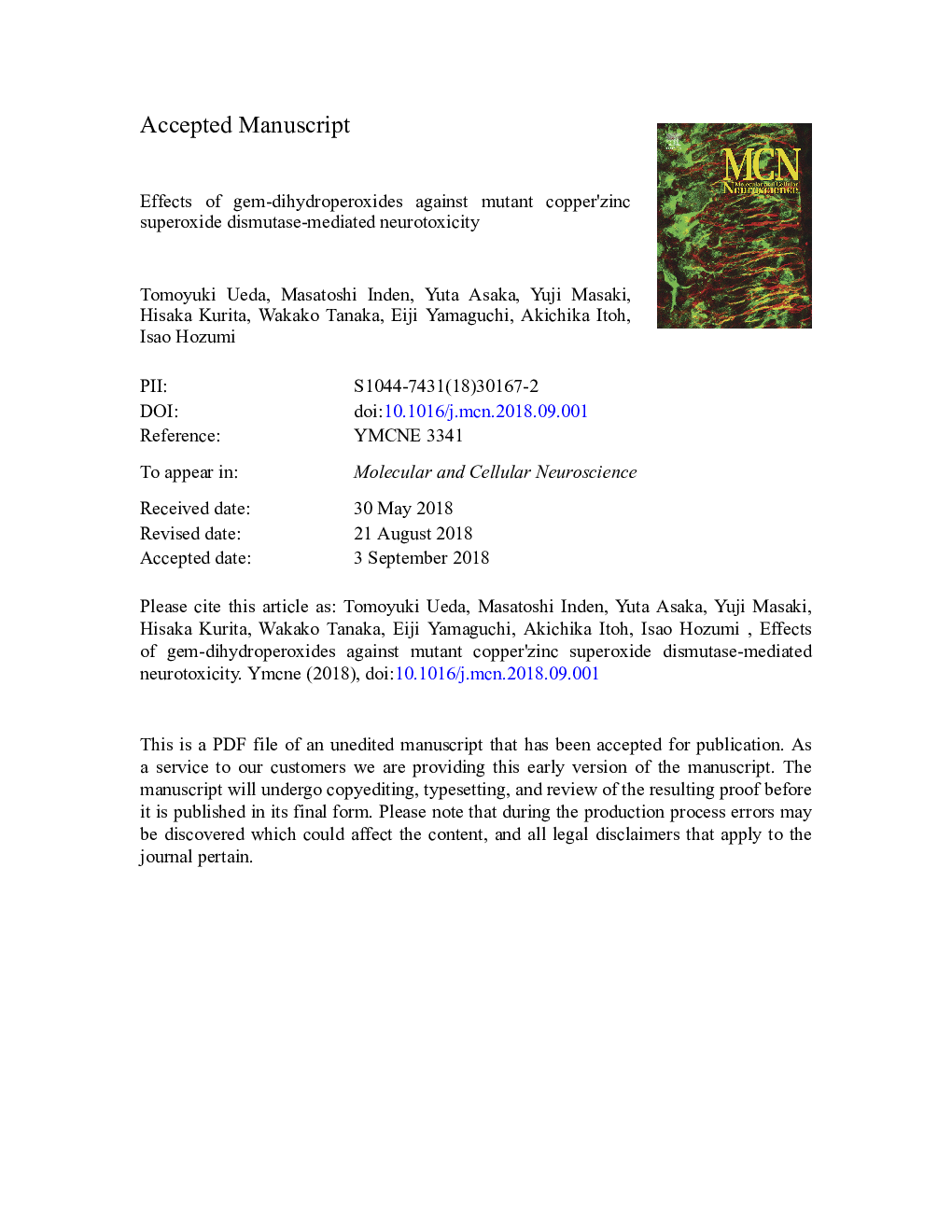| Article ID | Journal | Published Year | Pages | File Type |
|---|---|---|---|---|
| 11034006 | Molecular and Cellular Neuroscience | 2018 | 29 Pages |
Abstract
Amyotrophic lateral sclerosis (ALS) is a neurodegenerative disorder characterized by progressive muscle weakness, paralysis, and death. Although its neuropathology is well investigated, currently, effective treatments are unavailable. The mechanism of ALS involves the aggregation and accumulation of several mutant proteins, including mutant copperâzinc superoxide dismutase (SOD1), TAR DNA binding protein 43â¯kDa (TDP-43) and fused in sarcoma (FUS) proteins. Previous reports have shown that excessive oxidative stress, associated with mitochondrial dysfunction and mutant protein accumulation, contributes to ALS pathology. The present study focuses on the promotion of SOD1 misfolding and aggregation by oxidative stress. Having recently synthesized novel organic gem-dihydroperoxides (DHPs) with high anti-oxidant activity, we now examined whether DHPs reduce the mutant SOD1-induced intracellular aggregates involved in oxidative stress. We found that, among DHPs, 12AC2O significantly inhibited mutant SOD1-induced cell death and reduced the intracellular mutant SOD1 aggregates. Moreover, immunofluorescence staining with redox-sensitive dyes showed that 12AC2O reduced the excessive level of intracellular mutant SOD1-induced reactive oxygen species (ROS). Additionally, ESR analysis showed that 12AC2O exerts a direct scavenging effect against the hydroxyl radical (OH) and the superoxide anion (O2â). These results suggest that 12AC2O is a very useful agent in combination with other agents against ALS.
Related Topics
Life Sciences
Biochemistry, Genetics and Molecular Biology
Cell Biology
Authors
Tomoyuki Ueda, Masatoshi Inden, Yuta Asaka, Yuji Masaki, Hisaka Kurita, Wakako Tanaka, Eiji Yamaguchi, Akichika Itoh, Isao Hozumi,
